tca peel
Stimulate collagen and elastin production, diminish hyperpigmentation while revealing a firmer, brighter, and more even skin-toned complexion. TCA, which stands for trichloroacetic acid is regarded as a true “antiaging” peel. TCA peels stimulate the production of collagen, glycosaminoglycans, and elastin fibers in the first few weeks following application, resulting in plumper and tighter skin. After that, dermal connective tissue remodeling takes over which continues for several months. TCA’s superiority comes from its versatility and predictability. It can be applied in a single layer as a superficial peel, or it can be layered for deepen penetration. TCA peels can be used in combination with other acids such as Jessner or applied alone.
TCA peels are ideal for treating
- Blemishes
- Skin tone irregularities
- Skin textural issues
- Fine lines and wrinkles
- Acne scarring
- Hyperpigmentation
- Age spots
- UV Sun damage
- Melasma
- Flat Warts
- Rough Skin
- Skin laxity

TCA peels improve skin color, freshness, texture, skin tone, and fine lines and wrinkles. TCA is a natural second step when other acids stop producing benefits. It is also the first suggestion dermatologists recommend in treating cystic acne. All skin types can benefit from TCA peeling, although clients that are prone to post inflammatory hyper-pigmentation, or have a naturally darker skin tone, require special pre-treatment with a melanin inhibitor to avoid any unintended color changes in the skin. These are generally Fitzpatrick IV-VI, but any skin type could potentially have an issue.
How it works
TCA breaks up keratin, a protein found in skin. This causes the keratin to cease functioning properly, lighten in color and peel away from the skin over the course of several days. As the layers of damaged skin are removed, fresh, smoother, healthier skin is revealed. While a light peel only affects the topmost layer of skin, the epidermis, a medium peel can penetrate to the level of the papillary dermis to address and treat deeper skin damage. After a light TCA peel, your skin appears firmer, brighter, and more even in texture and tone. Hyperpigmentation, melasma, fine lines and shallow scars are lightened and reduced. Following a medium-depth peel, these imperfections are further reduced or fully erased. Wrinkles and skin laxity are improved, while scars are minimized or eliminated entirely. A minimum of six treatments are recommended administered in bi-weekly/monthly intervals.
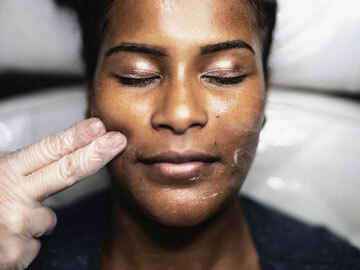
faqs
Prior to applying the peel, the skin in the area to be treated is prepped with a prep solution to remove any excess oil and dirt from the skin. Next, the TCA peel is applied using a large cotton tip applicator. Clients typically experience a tingling, warm sensation on the treated areas. The cryo-chiller can be used to blow cool air over the surface to minimize discomfort. This peel is applied in layers every five minutes. The number of layers of peel applied will depend on your skin’s reaction and the desired depth of the chemical peel. Once the desired endpoint has been reached, your skin will be rinsed with cold water. During the peel, the skin develops a white frosting which normally resolves in 15-30 minutes. After the frosting resolves, clients may notice their skin is a bit pink – which is normal. If a stronger percentage of TCA is applied, such as the 20% in layers, you can potentially see some swelling in the skin the following day. This is more common in the areas surrounding the eye area or in skin sensitive from prescription retinol usage. A cool compress can be applied.
Following the appropriate aftercare steps will help your skin heal properly and allow you to achieve optimal results. Clients are instructed to cleanse and moisturize their skin using gentle products. Patients should expect to experience peeling for the next 4 to 10 days, but this depends on the depth of the peel. Avoid picking at the skin as it peels, as this can lead to poor healing, infection, or dark spots. Dr Hudson recommends keeping the skin moisturized during the peeling process. Sun exposure should be avoided as much as possible while your skin is healing. Once your skin has fully repaired, you can resume your regular skincare regimen.
If you are already dealing with hyperpigmentation, you will notice these areas tend to darken. This is normal. This is temporary and occurs in many clients. As the pigment enters the upper layers of the skin, it appears darker. This signifies that these spots will be flaking off in the next week or so. Another reason for darkening of the skin is that it is dead skin. Dead skin tends to turn darker before it begins to peel. Some clients will see this, and others will not. It is more prevalent in those clients undergoing several layers of peeling or a higher percentage concentration of TCA. Just like before, the darkness will flake away once the skin starts peeling.
Most likely not. Pigmentation tends to run very deep and a series of 8 – or more peels may be required to remove all the hyperpigmentation. Chemical peels are not a one-time event. Continue and things will improve. Have patience and continue your daily treatments in-between peels.
On average, facial skin will start to become dry and begin flaking and peeling on about day 3 or 4 following the peel. Peeling tends to begin around the nose and mouth and will continue to progress outwards over the course of the next 4-6 days. The neck and decolletage areas require longer to peel. These areas will develop a rough texture, and you tend not to see large flakes. Expect peeling to begin around day 6-10 and then proceed for another week or so. Body peeling will take up to a month to complete. Two weeks or more may be required before you see any dryness at all.
Applying an Enzyme mask can facilitate the removal of those last bits of skin to come off. Am Enzyme mask targets dead skin, so these are beneficial to apply when you wish to remove this excess skin off. An Enzyme mask can be applied daily after about Day 5 to help remove the last flakes of skin.
This depends entirely on what percentage TCA that is used and how many layers are applied. On average, most patients can undergo 1-2 peels per month.
Your skin’s overall appearance will be improved after one peel. To address severe scarring, hyperpigmentation or sun damage, a minimum of six treatments are recommended administered in bi-weekly/monthly intervals to fully clear and transform your skin. Once you have obtained your desired results, maintenance peels may be performed every one to two years.
results
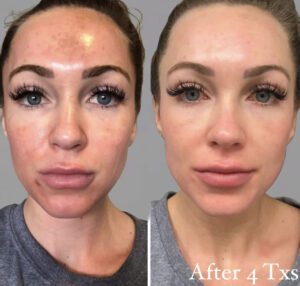
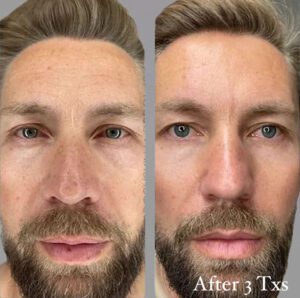
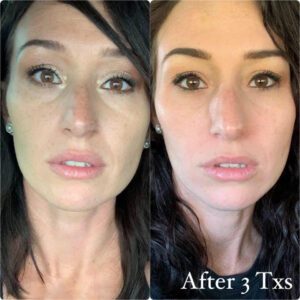
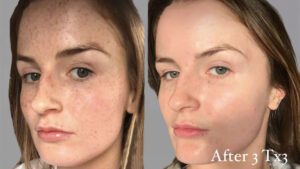
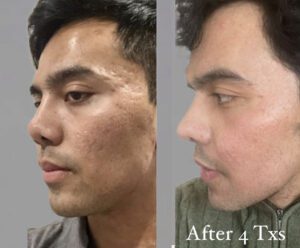
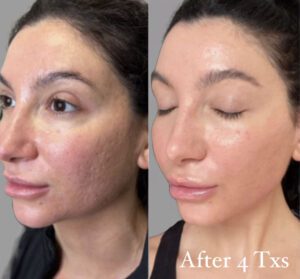
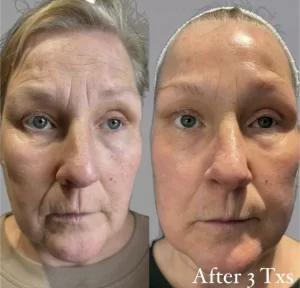
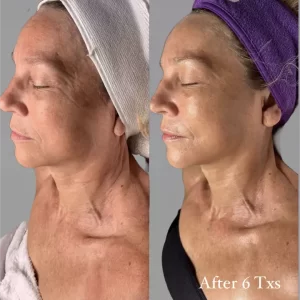
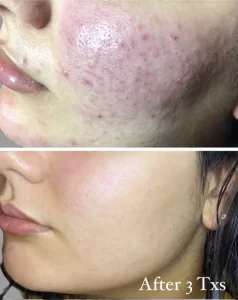
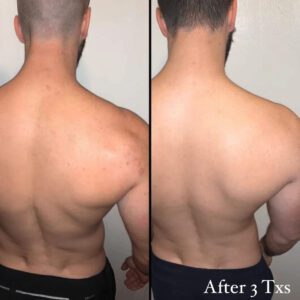

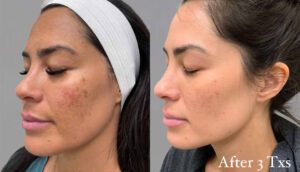
*Individual results may vary with different patient experiences.
*A series of treatments may be required for desired results.
